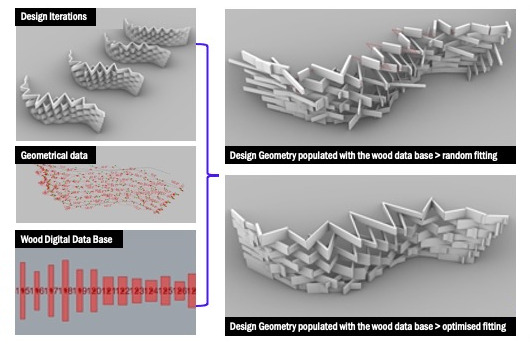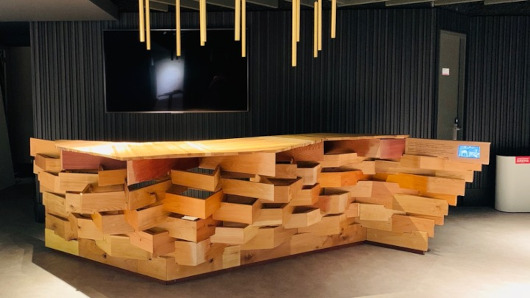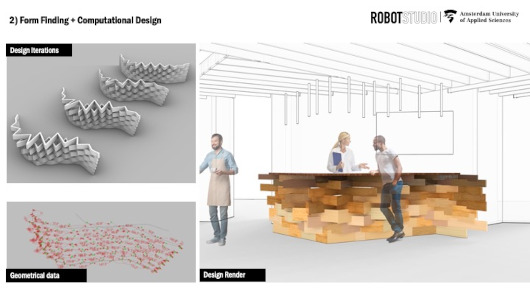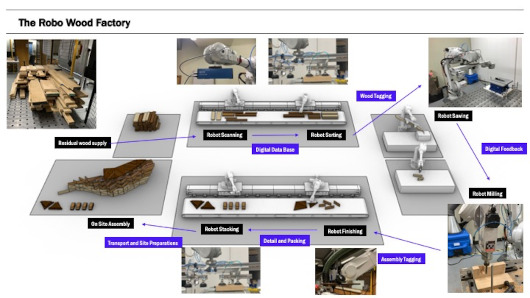 The Amsterdam University of Applied Sciences (AUAS) installed a hospitality desk of residual wood in the new Sky Club and House of Legends of the Johan Cruijff ArenA.
The Amsterdam University of Applied Sciences (AUAS) installed a hospitality desk of residual wood in the new Sky Club and House of Legends of the Johan Cruijff ArenA.
The desk is made using industrial robots and is a first step towards large-scale and automated processing of residual wood. Its design and production approach can help prevent usable wood from disappearing into the incinerator: instead, it can give the material a new life.
Working for the Digital Production Research Group at AUAS I helped design and write the code and guided students building the desk.
 The final product, installed at the Johan Cruijff ArenA
The final product, installed at the Johan Cruijff ArenA
 Design Process
Design Process  The Digital Production Research Group aims to come to a robotic factory to process residual wood.
The Digital Production Research Group aims to come to a robotic factory to process residual wood.
‘Processing residual wood into new objects is often expensive; it is mainly discarded because it consists of scrap pieces with different characteristics, such as color, texture, size, and shape. Existing woodworking techniques do not lend themselves to processing this in an automated fashion. That’s why it is often burned as firewood or at the municipal incinerator,’ says Malé-Alemany.
Together with the Johan Cruijff ArenA, Heineken Interior Design, interior constructor Nijboer Interieur, and lumber yard Amsterdamsche Fijnhout, the AUAS Digital Production Research Group investigated the possibilities for processing residual wood using computational design and robotic production techniques, to be applied to the reception desk.
Thanks to the innovative combination of technologies developed at the AUAS Robot Studio, in collaboration with its technical and project partners, it is possible to envision a more affordable, high-quality processing of residual wood on a large scale. This is an important breakthrough because the Netherlands has great ambitions in this respect, as the Dutch economy aims to be fully circular by 2050.
Team AUAS Robotlab: Marta Malé-Alemany, Marco Galli, Sebastian Yap, Erno Langenberg, Liselotte van Dijk, Javid Jooshesh, Daan Goedkoop + Students from the Robotlab
Image credit & part of the text: Amsterdam University of Applied Sciences (AUAS)
